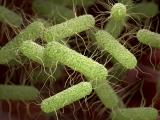Aug 4, 2006 (CIDRAP News) The Food and Drug Administration (FDA) says it is developing a technology that can identify real or fake bioterrorism agents faster and more cheaply than existing methods.
The technique uses mass spectrometry to sort out different species and strains of bacteria and distinguish them from inert substances such as flour and cornstarch, often used in bioterrorism hoaxes, the FDA said in a news release yesterday.
Mass spectrometry sorts ionized particles according to their weight, usually by passing them through a magnetic field and then using a photographic plate or some other device to trace their different paths.
The FDA's technique, called pyrolysis mass spectrometry, uses heat to vaporize the substance to be tested and then bombards it with argon atoms to cause ionization, according to a report by the FDA researchers in the journal Rapid Communications in Mass Spectrometry.
"The testing process works in a way similar to the FBI's fingerprint library for criminals," the FDA said. "A researcher can take patterns generated by a mass spectrometer's analysis of a substance to be identified and compare them to a database of known substances, for immediate recognition."
"We hope to see the testing put into place by government and industry in the near future," said Dr. John Wilkes, PhD, of the FDA's National Center for Toxicological Research, lead author of the research report.
With the new technique, it takes 3 to 8 hours to prepare a sample for testing but only about 7 minutes to run the test, the FDA said. The cost is as low as $2 per sample.
Many other tests use DNA amplification via polymerase chain reaction, which costs from $15 to $50 per sample and takes about 24 hours, the FDA said. Also, such tests can't identify substances containing no DNA, such as poisons, RNA viruses, or organic chemicals, according to the research report.
In the report, Wilkes and colleagues describe how they tested pyrolysis mass spectrometry on the foodborne pathogens Vibrio parahaemolyticus and Salmonella enterica, a mosquito-control product containing Bacillus thuringiensis, and several inert powders. (B thuringiensis was used in a bioterrorism hoax in 2001 in which a rapid screening kit wrongly identified the material as anthrax, the report says.)
The technique distinguished the bacterial samples from the inert powders and the Vibrio from the Salmonella species, according to the report. Further, the investigators were able to distinguish two different Vibrio strains and two S enterica serotypes. They even distinguished the mosquito-control product, a mixture of bacteria and other substances, from the other bacteria and powders.
The FDA said it is working with an industrial firm under a Cooperative Research and Development Agreement to commercialize the technique for quality control in food manufacturing and for counterterrorism applications.
See also:
Aug 3 FDA news release
http://www.fda.gov/bbs/topics/NEWS/2006/NEW01424.html
Research report in Rapid Communications in Mass Spectrometry



















